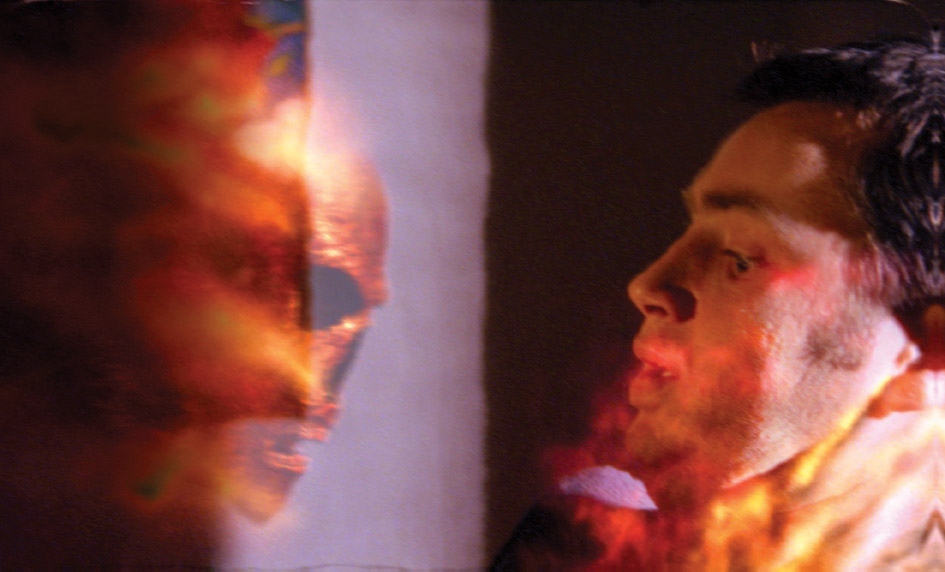A new film is being released. You may see it reviewed for two minutes on television, or take a bit more time to read a few hundred words in the print media. Web reviews can be glanced at and you can half-listen to a radio review. But for the producer of that film, years have been invested in getting the project to the screen.
The Inside Story, which stars Andrew Curry and Charles ‘Bud’ Tingwell, has its origins in the producer’s childhood. Film-maker Robert Sutherland’s first feature was released in his home town of Melbourne in July. It cost under AUD$5 million to make, was completely privately funded, and Sutherland wrote, directed and is distributing the picture. Not only is The Inside Story unusual for its non-genre type – it is a mystery/supernatural thriller/contemporary romance – but it is also unique for its number of visual effects. This feature stands out from the crowd of quirky comedies and crime capers that dominate Australia’s current filmscape.
The Inside Story tells the tale of Dean Olsen (Curry), an astrophysics student, who discovers a mysterious book in his Uncle Edward’s (Tingwell) house. Around the corner lives Liz Davies (Kate Oliver), a struggling novelist. It is the merging of these two people’s homes – a tale of parallel universes – that is at the heart of the story.
Sutherland describes the making of The Inside Story as a scary process; his objective was to get the film made step-by-step, in a project that took eight years, much frustration, and unforeseen complications, all on a steep learning curve.
So why has Sutherland succeeded when others have given up or failed? A clue is found in Sutherland’s early interest and experience in film-making. He wrote stories and made home movies from primary school age. He has since built on this experience, in several areas, over time. This has allowed him to get to where many others would like to be – with a consistently well-reviewed first feature and a theatrical release.
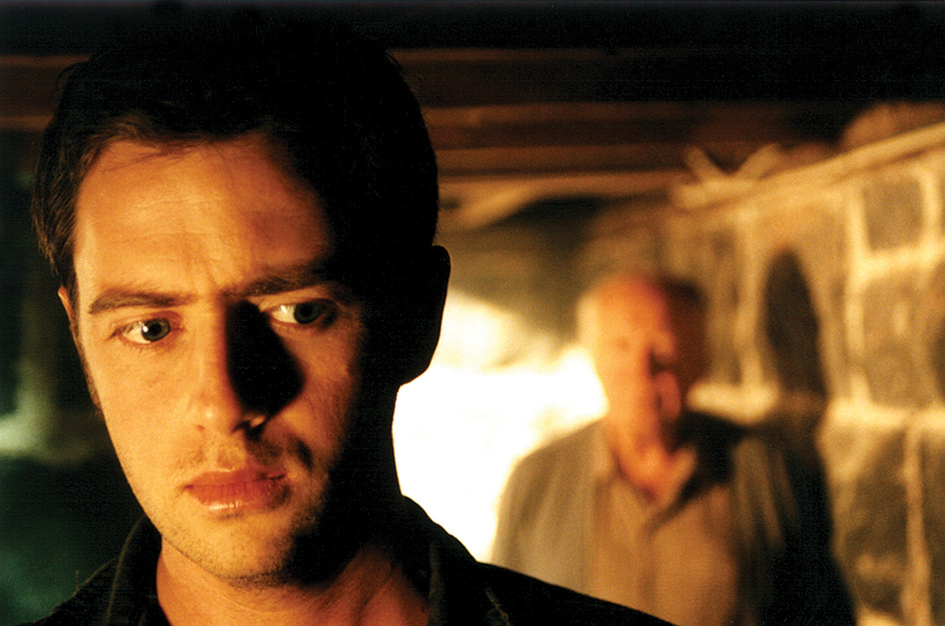
A Lifelong Interest in Film and Storytelling
As a 10-year-old, Sutherland grabbed hold of his father’s Super 8 home camera and made animation films with Plasticine and Lego; Star Wars was a favorite subject. He later used a 16mm Bolex.
This was a long time before the era of digital video or even home video. I started working with the Bolex, because I found that the capacities of 16mm had a lot more potential. At the same time I had always been writing, so I was concurrently writing and experimenting with cameras and effects.
He is still a keen fan of fantasy and science fiction stories, David Eddings and J.R.R. Tolkien being favorite authors. He is fascinated by supernatural beings with different powers, and especially with the hierarchy of the characters, such as Sauron – the ultimate power in The Lord of the Rings.
This interest in ‘who is in control’ is reflected directly in the subject matter of The Inside Story, which explores the linking of two universes. Sutherland jotted down the idea for the tale when he was fourteen and ten years later he thought it time to write a script on that subject. Some sixteen years on from his initial thoughts, his jottings have been realized on the big screen.
How to Write an Award-Winning Script
One of the criticisms made of Australian features generally is the underdevelopment of the script, and consequent poor telling of the tale on screen. Sutherland has not had a formal education in film-making, although he has worked behind the camera in the industry. He gave up long screen-crew days for a job stacking shelves at Myer, which allowed him time for screenwriting.
He has also made two short films, The Shadow (1993) and Computer Games (1996), and has studied screenwriting via a short course at The Open Channel, and in the Advanced Diploma in Professional Screenwriting at RMIT University in Melbourne. He also spent four years re-writing The Inside Story.
I swapped a lot of the characters around. Initially I tried to set the story in one location. My previous short film had about ten different locations and it was just a nightmare. On the basis of that experience I thought ‘I want to keep it as simple as possible’.
When penning the first draft of The Inside Story, Sutherland had no idea that it would be another twenty-one drafts before he would have a camera-ready script. The script changed significantly from the first to final draft.
I knew there was a character in the story that was effectively the alter-ego of the writer. A lot of the redrafting was trying to find what that dark side of the character was all about. For the first fifteen or so drafts, I just didn’t understand who that character was and who that alter ego represented in the story. Quite late in the piece it started to make sense that the creative demon should be the self-doubt, frustration, and all of those creativity-inhibiting forces that a creative person has to deal with. That [relates to] Liz Davies. This also has meaning for Dean Olsen, because his whole world is threatened by that force.
Sutherland asked friends, family, and some cast members who came early to the project to give him feedback on the script. He also had formal assessments by the Australian Writers’ Guild and The Open Channel.
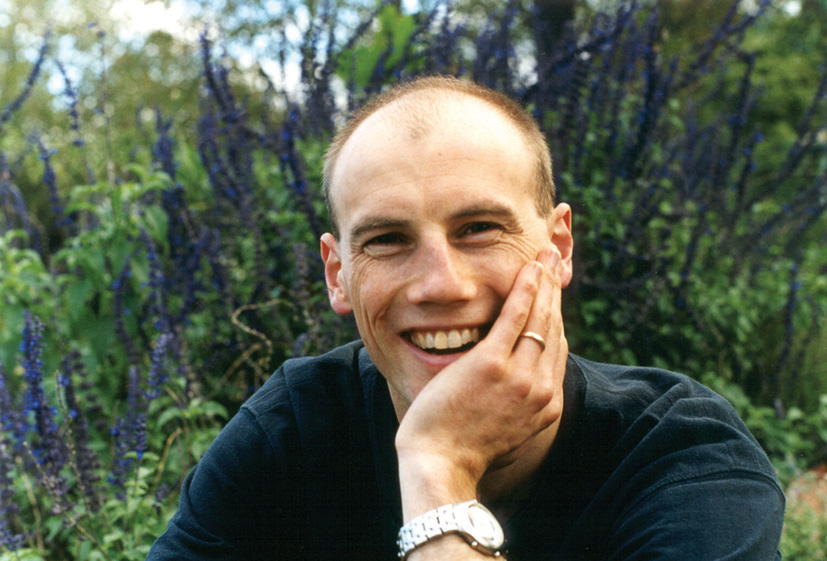
Raising finance
Having being unsuccessful in finding a producer, Sutherland decided to produce the film himself. Before going through the funding process, he shot a trailer for the film with a couple of the cast.
He took the usual avenues for finding funding bodies, such as approaching the Australian Film Commission, distributors, and the Film Finance Corporation. In retrospect he sees that it was inevitable that the various organizations declined to fund his project, as he had no track record in features, and no big name cast attached (at that stage). He then decided on a corporate sponsorship approach and located product placement opportunities in his script.
I wrote to ten or twelve companies and asked if they would like to chip in AUD$50,000 for a bit of exposure. That was just a figure I picked out of my head – I mean how much do you ask for? I figured if I could get ten companies to give me $50,000 I would have my budget. I was willing to try anything.
This idea also failed to provide any finance. Having invested hundreds of hours in funding applications which had failed, Sutherland was disillusioned with the whole idea of making a feature, and was about to give up.
However, he finally attracted a number of individuals who were interested in the business of making the film. He had written a short play for a local organization and a member of the audience came on board as the executive producer of The Inside Story. This anonymous private patron took a financial risk in supporting Sutherland, which has subsequently paid off.
Shooting the film
For cost reasons, the film was shot on 16mm and blown up to 35mm after a complicated SFX process. Costs were minimized by using only two locations, one of which was Sutherland’s parents’ home, which, incidentally, provided an inspiration for the story. The shoot took a total of six weeks. During this time, Sutherland’s parents had their home turned upside down and were invaded by people, equipment and miles of cable.
Casting was another interesting aspect. Two weeks before the commencement of filming, the roles of Dean and Edward had still not been cast. It was Sutherland’s good fortune that, when approached, Curry and Tingwell promptly said ‘yes’. Tingwell, the best-known cast member of The Inside Story, was suggested by one of the crew members, and has greatly supported the film in promotional activities.
Post-production – Special Effects and Sound Complications
Following the end of shooting, the SFX and soundtrack were added and a few extra scenes were shot. The amount of special effects is unusual for a first feature as there is a considerable amount of CGI and flame manipulation featured, along with the complex sound effects.
The post-production process was complicated. In sum, the parts of the 16mm footage which required digital SFX manipulation were separated from those not requiring any. The effects were added as required, and the two film types were transposed to 35mm stock and then spliced together.
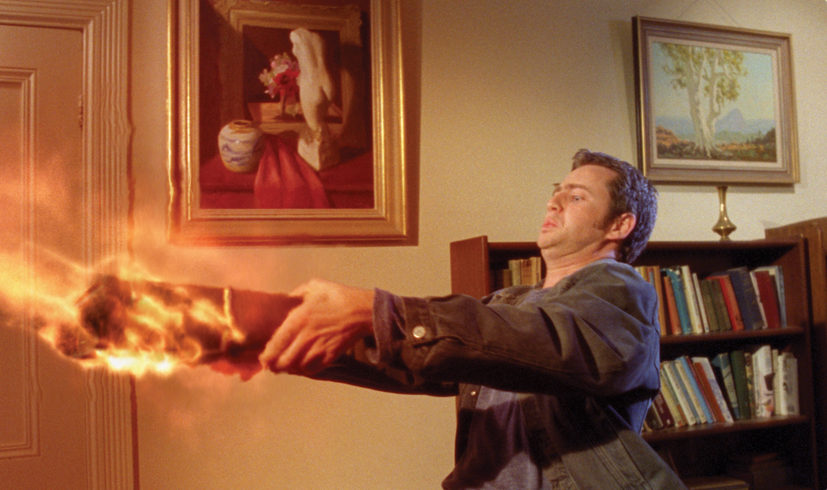
The opening sequence of the film is a symbolic creation of a universe, an interesting combination of text, symbols and other original effects. What we see here are elements of the novelist Liz’s writing; the text and formulae are escaping Liz’s typewriter to create a new, imagined world.
In an opening sequence similar to that of Contact [Robert Zemeckis, 1997], The Inside Story starts with the Big Bang, showing how a universe begins, and hinting at where the control in its creation lies. Originally the opening sequence was more photo-realistic, and was adapted to include SFX as funds became available.
Sutherland could have chosen a less expensive method of getting his SFX, such as incorporating them at the video resolution stage of the post-production process, rather than at the film resolution stage. But he was mindful of the quality of the final product:
There would have been cheaper ways to do it, but that would have meant the effects were not of an international market quality. [It is vital to get it right, as] audiences can pick poor quality SFX a mile away.
Sound plays a large part in the telling of The Inside Story. Human, animal and metallic sounds were mixed at many levels. One of the post-production complications included the need to replace the musical score. The original music commissioned by Sutherland did not fit the piece, so a new composer was brought in. Robert Clarke is Principal Percussion with the Melbourne Symphony, and he used a number of musicians from the orchestra.
The sound design was complicated, and required close cooperation between Clarke and the sound designers, Frank Lipson and Glenn Newnham, who had previously worked on Chopper (Andrew Dominik, 2000) and William Shakespeare’s Romeo and Juliet (Baz Luhrmann, 1996).
During the post-production process, The Inside Story won the Australian Writers’ Guild Award for Best Feature Film Screenplay, providing a great fillip for the writer/director/producer. More significantly for the investors in the film, it was also a crucial professional endorsement.
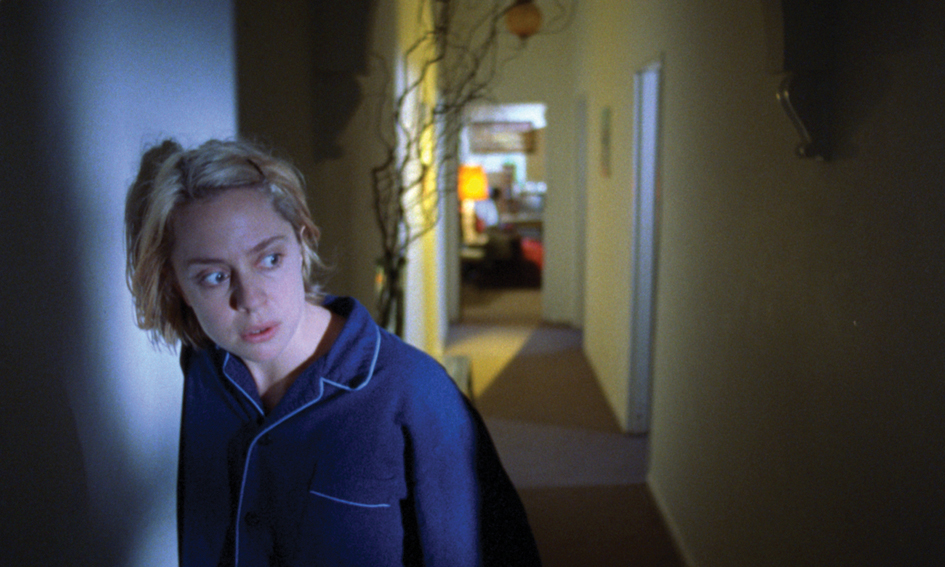
After Completion – Distribution
It was two years from the time the film was in the can to its Melbourne season at the Rivoli Cinema. During this time Sutherland shopped the film around at various festivals in Australia and overseas. At the time of writing, The Inside Story has opened in Victoria at three further Village cinemas and at one independent theatre. Other outlets, particularly in New South Wales, are soon to follow.
He obtained a season at the Rivoli Cinema in East Hawthorn, Melbourne, via its local connection with the shooting location of Sutherland’s parents’ home. Other Village cinemas are scheduled to screen the film via their Cinema Europa arm, along with regional independent cinemas.
It is never easy to get your film promoted, because there is so much product already out there. It has been such an insight into the world of distribution to suddenly become a distributor [myself]. When you don’t have the clout of having money it is pretty damned hard work just getting the screenings and getting people in there [to see the film]. I have other things kicking along in the background but at this stage my main focus is to see how far this can go. It is my first feature, and I want to make the most of it.
The favorable reviews in the press, and especially on The Movie Show on SBS, will all help in Robert’s plan for wider distribution, both in Australia and overseas.
The Movie Show reviews have given [The Inside Story] a credibility injection, which is a real plus. It remains to be seen what that will mean in terms of exhibition and sales, but it certainly will help.
Marketing has been small-scale, given the budget limitations. Part of Sutherland’s approach has been the establishment of a web site discovertheinsidestory.com which includes a trailer. At the special premiere of The Inside Story last July, he described his marketing as being ‘just me and a telephone at the moment’.
Essentially, Sutherland is doing everything by himself, relying on word-of-mouth to promote the film. He is working from his rented home in Box Hill.
I can’t pay a publicist, so I am just doing what I can. There wasn’t any strict marketing plan in place initially. The objective was just to get the thing made. I’d have enough money to do the next stage then think ‘Ok, how do we go from here?’ There was never enough money to say ‘Ok, we can allocate this much to marketing’.
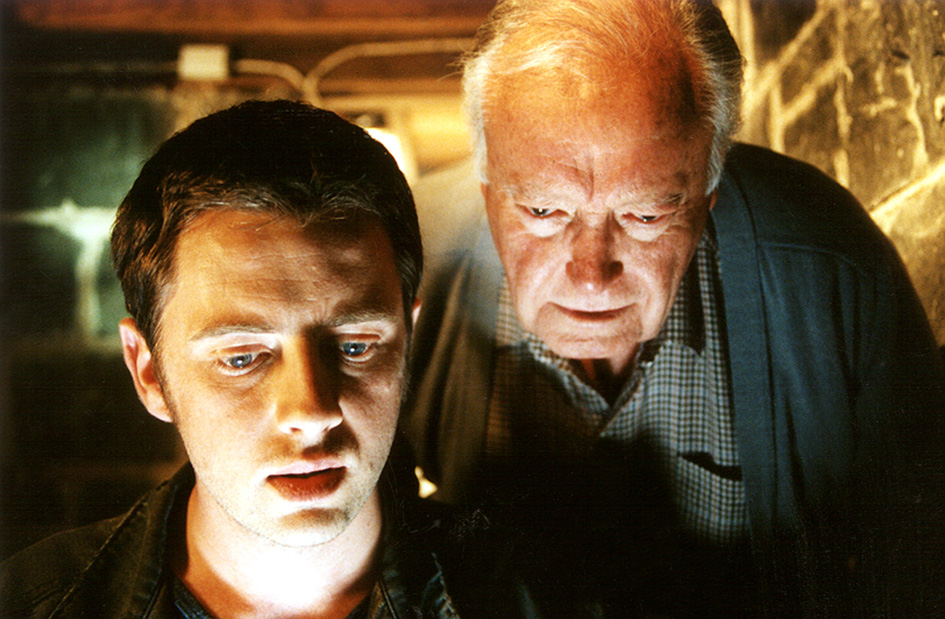
The Last Word …
If there is a constant in Sutherland’s career, it is that he is always learning about the practical and business side of film-making. It is evident that he is quietly battling away in a quest to see his film maximize its potential.
Sutherland also seems to inspire friends, family, cast and crew. Tingwell has described him as ‘a delight to work with’, and the fact that Sutherland has raised a substantial amount of finance, against the odds, shows the confidence that investors have in him.
At one stage during the interview, Sutherland described The Inside Story as being ‘the latest in a long line of increasingly ambitious projects’. Sutherland’s projects may be increasingly ambitious, but they are founded on an increasing amount of hands-on experience.
At the time of going to press, The Inside Story has screened in Victoria at the Rivoli, Jam Factory and Waverley Cinemas, and has had seasons at Rosebud, Sorrento, Geelong and Mansfield. Armidale (NSW) and Sydney venues are to follow.
This interview took place in Melbourne on 28 August 2003.
